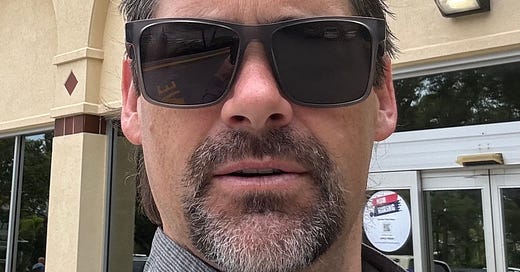This won't sit well with you, but you have CEO blindspots
Every CEO has blindspots. And new ones come up as you and your team create and execute together. Unless you have a safe culture and a team willing to speak up, some of your team won't tell you or will unintentionally (and sometimes intentionally) exploit your blindspots to their advantage.
Your CEO blindspots are "Hidden Nos" holding you and your team hostage from executing at your highest potential. Many CEOs don't find or correct their blindspots before it's too late - loss of team members or company failure.
Here are several techniques that separate Elite Entrepreneurs from those who will ultimately plateau.
"What I Wish You Knew" Sessions - Hold private sessions where you ask your team member: "What's one thing you wish I knew about how my decisions/style affects the team?" This frames it as helping you understand impact rather than criticism.
The "Stop, Start, Continue" Framework - Adopt and hold quarterly team sessions where everyone (including you) shares what the leadership should stop doing, start doing, and continue doing. When you also participate, it creates psychological safety for honest feedback.
"Devil's Advocate" Rotating Role - Assign a different team member each month to be the official devil's advocate in leadership meetings. Make it their job to challenge assumptions and point out potential blindspots. This makes dissent an expected role rather than personal criticism.
"Red Team" Exercises - Regularly have your team role play as competitors or critics, specifically tasked with finding weaknesses in your strategy or leadership approach. This gamifies the feedback process.
Customer/Stakeholder Perspective Sharing - Regularly have team members share unfiltered customer, investor, or partner feedback about the company and your leadership. Listen in on customer complaint calls. Often your team hears things directly that never make it to you.
"What Would Our Competitors Say?" - Have the team brainstorm what competitors would identify as your biggest strategic or leadership weaknesses. This externalizes the critique and makes it less personal.
Scenario Planning for Leadership Failures - Run exercises asking: "If I were to fail as CEO, what would likely cause it?" This helps identify specific vulnerabilities in your leadership style or decision-making.
Model Vulnerability First - Regularly share your own mistakes and learning areas in team meetings. Apologize for mistakes. When you acknowledge your own blindspots and mistakes openly, it gives others permission to point them out.
Personal Conversation with the Messenger - Take time to reach out personally, thank and reward team members who surface difficult feedback. Make it clear that bringing up problems early is valued more than smooth relationships.
The "Yes, And" Response - When you receive critical feedback, respond with "Yes, I can see that, and what would you suggest?" This shows you're taking it seriously and want solutions, not just problems.
"Learning Leader" Identity - Frame yourself as someone who's always learning rather than someone who has all the answers. Ask questions like "What am I not seeing here?" and "How could I have handled that better?"
Here are some of my recent blindspots pointed out by my team and we're collectively working to resolve and execute on suggested solutions.
"Your failure to reschedule an investor meeting showed that our scheduled weekly strategy session was not important."
"Allowing 1 team member to always be the devil advocate in weekly meetings is not productive."
"We need a written agenda for our senior advisor meetings. It's something they expect from the CEO."
The key is creating a culture of regular feedback about your CEO blindspots as a collaborative effort to make the company stronger, not a personal attack on your competence. When your team sees that surfacing issues actually helps everyone succeed, they'll be much more willing to share them constructively.
Good luck this week to fellow CEOs risking their reputations to create, execute and impact. Pick one of the techniques, listen intently, and make the correction.
I believe in you!



